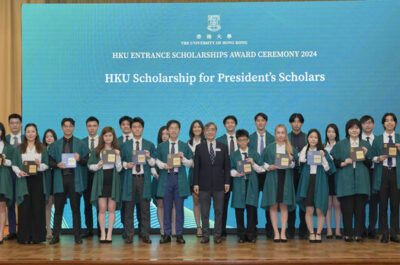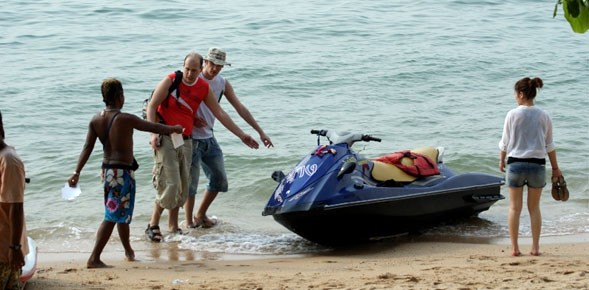It is to be hoped that year 2013 might see more government’s policies put in place to truly help tourists facing troubles or scams when visiting Asia. Malpractices against foreign travellers seem to multiply as their number grows in the region.
BANGKOK – Asia is one of the most attractive holiday destinations in the world not only because of its wonderful landscapes or cultural attractions, but also for its people.
Asians are generally considered as affable, friendly and very service-minded. In most cases, this is true. But unfortunately, rapid development of tourism in many Asian countries is taking its toll on some people, who seize the opportunity to harm confident foreign travellers with scams or by cheating.
Of course, the phenomenon does not only exist in Asia. Europe or the Americas have also plenty of locals ready to arm travellers. The phenomenon is not new. But in Asia, scams are sometimes well known from the authorities who should then act more efficiently.
I will take for once my own recent experiences as a traveller. I believe to finally represent the typical Westerner on the move in the region Starting at Manila airport last September, people wearing official airport’s badges lured me at the exit of the terminal to get a taxi. Asking about the price to go to Malate district – a mere 6 km ride from the airport- the ‘taxi’ officer told me an exorbitant price, probably three times the normal fare. Asking if it was really a taxi, the person finally admitted working for an official limousine company. I discovered later a well-hidden sign at the airport indicating where metered taxis were parked. Putting large boards at the exit would have certainly helped avoiding the confusion.
In Kuala Lumpur, taxis overcharging users are no secret and the government has tried hard to protect consumers. If alternative public travel does exist in Kuala Lumpur, a lot has still to be done to avoid taxi cheating in provincial cities. I was personally robbed also three times in hotels over the last decade and I had a couple of friends experiencing similar problems. Maybe we were all not enough prudent. But the number is worrying. At last PATA AGM in Kuala Lumpur, the management of the hotel where the conference took place provided leaflets with safety rules.  Kuala Lumpur taxi with signage indicating that he will use its meter…
Kuala Lumpur taxi with signage indicating that he will use its meter…
I was also a victim of black market in Myanmar as I had no other choice to change my money inofficially as all banks were already closed and no one would accept foreign currencies. With the introduction of ATM accepting international credit cards such as VISA, this should now become a bad experience of the past.
A friend of mine visiting Bangkok and coming from Cambodia told me that he had to bribe authorities in both Thailand and Cambodia to pass the border. It cost him an additional THB 300 (US$ 10). I was myself victim a few years ago of overcharged fees at the Laotian border. Visa was due to be paid in US dollars (US 25) but paying instead 1,000 Baht – I had no dollars-, the visa finally cost me US$ 33 as I never got back the change. The officer even wrote on the receipt –upon my request- that the paid amount was US$ 25.
I always consider Thailand a safe country. Except that as soon as I go around with friends visiting, I see what kind of harassment they are facing: from pushy tuk-tuk drivers charging exorbitant prices for small rides to smiling locals telling that certain monuments are closed and that they would instead take travellers to another temple + a jewel shop (known as “Gems” scam), I experienced all of this. I also see more and more taxis refusing guests in Bangkok or refusing to put their meter. Last week, a taxi from Silom to On Nut area (8 km, the equivalent of 75 Baht) asked me 200 Baht for the ride.
People in Phuket or Pattaya complain also a lot about scams when renting jet skis as owners keep deposit fees for supposedly damaged material.
But one of the most annoying points in Thailand is probably the dual-pricing system for Thais and foreigners. That Thais would pay less to enter a museum or an attraction could be understood: disposable income for many Thais is still quite low and paying a high price could deter them to visit some places. However, to be sure that visiting foreigners would not understand, prices at entrance of monuments and museums are exclusively written in… Thai numbers!  Entry tickets to Sukhothai with price for thai and for foreigners
Entry tickets to Sukhothai with price for thai and for foreigners
Arglit Boonyai, multimedia and digital editor for the Bangkok Post wrote the following comment on December 22 in an article named “If we’re so happy, why am I so sad”:
“Admittedly Thais are quite friendly about the way they rip you off, but that’s like a tiger asking you how your day was while it chews on your femur […] If Thais were really into being nice, we wouldn’t charge foreigners more for tourist attractions by writing dual prices in Thai. I don’t know any other instance where we use Thai numerals other than when we’re charging tourists more than locals and seeking to hide it”, he said in his editorial.
And it does not fool visitors anymore. Visiting Sukhothai for Christmas, I heard in Ramkhamhaeng National Museum a French woman telling to her husband in front of a board showing the evolution of the various Thai writing over the centuries: “I should learn the way they write numbers in Thai, as I could finally know how much Thais really pay!” Why then not to explain the reason of the lower entrance fee for Thais? (My Thai friends told me that they already pay enough taxes to the State, and that include the budget of the Ministry of Culture). Tourists might probably better understand the rational. But is the fact to write numbers in Thai not already a way of admitting some guilt over the practice? The debate is open!
I had another bad experience in Sukhothai. Paying 100 Baht the entrance to Wat Sichum temple – instead of the 20-Baht fee for locals- I had the displeasure to see cars just parked in front of the temple. Complaining about it and asking the cars to be parked on the side – a mere three meters away which would have helped to free the view- I had a strong argument with an old Thai man, owner of the cars. He told me that I did not understand anything about Thais when trying to explain that he could respect tourists visiting the temple by parking just somewhere else…  Cars parked in front of Sukhothai Wat Sichum temples
Cars parked in front of Sukhothai Wat Sichum temples
If tourists have to respect the country they visit as well as local customs, locals must also learn to respect foreign travellers. Mutual respect and understanding will become increasingly crucial to a country’s appeal, especially with rising competition to chase the tourist dollar and with social networks able to do or undo very quickly a destination.
It is certainly not easy for governments to make people aware about the right way to handle tourists. Public prevention campaigns might help by explaining that tourists bring considerable economic benefits to countries. By considering foreigners as guests and not only as source of revenues, it is likely to see those tourists being back and spreading the good word around them.
I recognize that Asian governments generally tried hard to circumvent scams and bad practices to protect tourists. But the task is immense. For example, tourist polices have been put in place by Thailand, the Philippines, Malaysia or Bali. There efficiency still needs to be confirmed as I could already experience it in Thailand and Malaysia. If they generally prove to be an important psychological support to tourists in distress, in most cases they have zero power to act in contrary to regular police forces. In Singapore, the Singapore Tourism Board provides an assistance phone number opened 24 hours a day, every day.
Beside education campaigns to locals, another very effective –and easy to implement- measure, would be to provide an explanation booklet or leaflet to any traveller entering the country – which could be distributed with customs declaration for example- reminding of potential scams and providing safety trips as well as telephone numbers in case of trouble. When calling, tourists would be sure to find immediately someone dealing with the problem they face and taking action.
This would certainly help reducing the risks of possible scams. And even do a lot of positive for the entire region. By showing that governments care about their travellers, they will show that they are what most tourists think about the continent: a place populated by gentle caring people– this is what most Asians are indeed-. This is worth the effort.
Luc Citrinot a French national is a freelance journalist and consultant in tourism and air transport with over 20 years experience. Based in Paris and Bangkok, he works for various travel and air transport trade publications in Europe and Asia.




![[PR] PR_Ascott and Vimut Hospital_2024](https://www.traveldailynews.asia/wp-content/uploads/2024/04/PR-PR_Ascott-and-Vimut-Hospital_2024-400x265.jpg)









































































